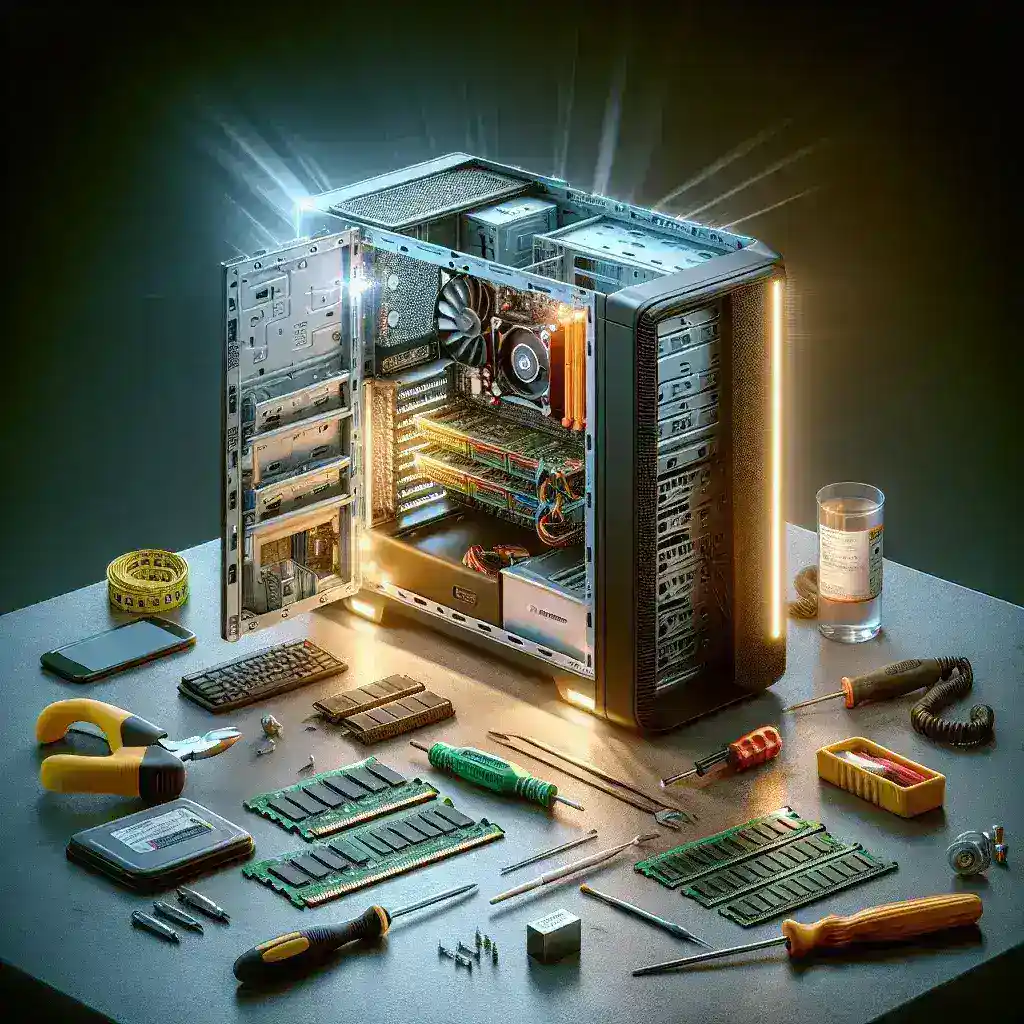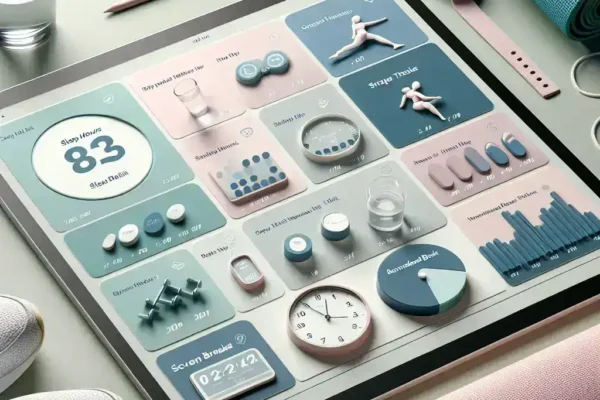When it comes to enhancing your computer’s performance, upgrading the RAM (Random Access Memory) is one of the most effective methods. Whether you’re a seasoned tech enthusiast or a beginner looking to improve your system, this article will provide you with valuable insights and practical tips to help you through the process. Let’s dive into the world of RAM upgrades and explore how you can maximize your computer’s capabilities.
Why Upgrade Your RAM?
RAM plays a crucial role in your computer’s overall performance. It acts as the temporary storage space where your system loads data for quick access. A sufficient amount of RAM ensures that your computer can handle multiple tasks simultaneously without slowing down. Here are some key reasons why you might want to consider upgrading your RAM:
- Improved Multitasking: With more RAM, you can run several applications at once without experiencing lag or slowdowns.
- Faster Application Launching: Applications load faster and run smoother with increased RAM capacity.
- Better Gaming Experience: Many modern games require significant amounts of RAM to run optimally. Upgrading can enhance graphics and reduce lag.
- Enhanced Productivity: For professionals running resource-intensive software like video editing tools or CAD programs, more RAM can significantly improve workflow efficiency.
Understanding RAM Types
Before you dive into the upgrade process, it’s important to understand the different types of RAM available on the market. The two primary types of RAM used in modern computers are DDR3, DDR4, and DDR5. Each type has its own advantages and compatibility considerations:
- DDR3: This is an older type of RAM, commonly found in computers manufactured before 2014. While still functional, it’s generally less efficient and slower compared to newer RAM types.
- DDR4: Introduced around 2014, DDR4 offers higher bandwidth and lower power consumption than DDR3. It’s widely used in mid-range and high-performance systems.
- DDR5: The latest generation of RAM, DDR5 provides even greater speed and efficiency. It’s ideal for the latest high-end systems and gaming rigs.
Ensure your motherboard supports the type of RAM you plan to install. Mixing different types of RAM can lead to compatibility issues and reduced performance.
Choosing the Right Amount of RAM
The amount of RAM you need depends on your specific use case. Here’s a breakdown to help you decide:
- For Basic Usage: 8 GB is usually sufficient for everyday tasks such as web browsing, document editing, and media playback.
- For Moderate Usage: 16 GB is a good choice for users who run multiple applications simultaneously, stream media, or play light to moderate games.
- For High-End Usage: 32 GB or more is recommended for professionals, hardcore gamers, and those working with large datasets or complex software.
Consider your current and future needs to ensure your upgrade will serve you well. Remember, more RAM doesn’t always mean better performance; it should align with your workload and system capabilities.
Checking Compatibility
Before purchasing new RAM, it’s crucial to check your system’s compatibility. Here’s a step-by-step guide to help you:
- Identify Your Motherboard: Check the model number of your motherboard. This information is usually found in the computer’s manual or on the manufacturer’s website.
- Consult the Manual: Refer to your motherboard’s user manual to find out the supported RAM types and maximum capacity. If you can’t locate the manual, search online using your motherboard’s model number.
- Use CPU-Z: Download and install CPU-Z, a free utility that provides detailed information about your hardware, including RAM slots and supported types.
- Check BIOS/UEFI Settings: Sometimes, your BIOS/UEFI settings can limit the amount of RAM your system can recognize. Ensure these settings are configured correctly to support the maximum RAM capacity.
By verifying compatibility, you avoid the hassle of returning incompatible RAM modules and ensure a smooth installation process.
Purchasing Quality RAM
The quality of RAM you choose can significantly impact your system’s stability and performance. Here are some tips to help you select the best RAM:
- Brand Reputation: Stick to reputable brands like Corsair, Kingston, Crucial, and G.Skill. These manufacturers are known for their reliability and quality.
- Speed and Latency: Higher speeds (e.g., 3200 MHz for DDR4) and lower latency (e.g., CL14 for DDR4) can offer better performance, but they come at a higher cost. Balance performance needs with budget constraints.
- Heat Spreaders: Look for RAM modules with heat spreaders to help dissipate heat and maintain optimal temperatures during heavy usage.
- Warranty: Ensure the RAM you purchase comes with a warranty. Most reputable brands offer lifetime warranties on their products.
- Compatibility with Other Components: Verify that your chosen RAM is compatible with your CPU and other components. Some CPUs have limitations on the maximum RAM speed they can support.
Research and read reviews to make an informed decision. Websites like Tom’s Hardware and AnandTech offer comprehensive guides and benchmarks for various RAM modules.
Preparing for Installation
Once you’ve purchased the right RAM, it’s time to prepare for installation. Follow these steps to ensure a smooth process:
- Backup Your Data: Always back up important files before making hardware changes. This precaution helps prevent data loss in case something goes wrong.
- Power Down Your System: Turn off your computer and unplug it from the power source to avoid electrical damage during the installation.
- Discharge Static Electricity: Touch a grounded metal object or wear an anti-static wristband to discharge static electricity. This prevents static shocks that can damage sensitive components.
- Open Your Case: Carefully remove the side panel of your computer case to access the motherboard. Refer to your system’s manual for specific instructions.
- Locate the RAM Slots: Identify the RAM slots on your motherboard. They are typically located near the CPU socket.
Taking these preparatory steps can help you avoid common pitfalls and ensure a successful installation.
Installing the New RAM
The actual installation process is relatively straightforward. Follow these detailed steps to install your new RAM:
- Remove Old RAM (if necessary): If you’re replacing existing RAM, gently push down the clips on either side of the RAM module to release it. Lift the module straight up and out of the slot.
- Align the New RAM: Align the notches on the bottom of the RAM module with the ridges in the slot. This ensures that the module is inserted correctly.
- Insert the RAM: Place the RAM module into the slot at a 45-degree angle, then firmly press it down until the clips snap into place. You should hear a click when the module is securely installed.
- Repeat for Additional Modules: If you have multiple RAM slots, repeat the process for each module. Ensure they are all securely installed.
- Close the Case: Once all modules are installed, carefully replace the side panel of your computer case and secure it with screws.
- Power On and Verify: Plug your computer back into the power source and turn it on. Enter the BIOS/UEFI settings to verify that your system recognizes the new RAM. Check the frequency and timings to ensure they match the specifications of your RAM.
Following these steps carefully will help you avoid frustration and ensure that your RAM upgrade is successful.
Troubleshooting Common Issues
Even with careful preparation, you may encounter issues after installing new RAM. Here are some common problems and how to troubleshoot them:
- System Doesn’t Boot: If your computer fails to boot, try removing the newly installed RAM and inserting only one module at a time to identify any faulty modules. Also, ensure that the RAM is seated correctly.
- Inconsistent Performance: If your system performs inconsistently, it could be due to mismatched RAM modules or incorrect settings in the BIOS/UEFI. Verify that all modules are of the same type, speed, and brand. Adjust the memory settings in the BIOS/UEFI if necessary.
- Blue Screen of Death (BSOD): A BSOD can indicate a problem with the new RAM. Run a memory diagnostic tool (like Windows Memory Diagnostic or MemTest86) to check for errors. Replace any faulty modules.
- Overheating: If your system overheats after the upgrade, ensure that your cooling solution is adequate. Poor airflow or a malfunctioning fan can cause temperature issues. Consider upgrading your cooling system if necessary.
If you’re unable to resolve the issue, consult the RAM manufacturer’s support or seek help from a professional technician.
Maintaining Your System After the Upgrade
Upgrading your RAM is just the first step in maintaining a high-performance system. Here are some tips to keep your computer running smoothly:
- Monitor System Health: Use tools like HWMonitor or Core Temp to keep an eye on your system’s temperature and voltage levels. Excessive heat can degrade RAM performance over time.
- Update BIOS/UEFI Firmware: Ensure your motherboard’s firmware is up to date. Newer firmware versions often include improvements that can enhance RAM stability and performance.
- Perform Regular Maintenance: Keep your computer clean and dust-free. Dust can interfere with heat dissipation and affect the performance of your RAM and other components.
- Optimize Software Settings: Adjust your operating system’s settings to take full advantage of the increased RAM. For example, in Windows, you can configure the virtual memory settings to optimize performance.
Regular maintenance and monitoring can help you avoid potential issues and prolong the lifespan of your upgraded system.
Real-World Examples and Case Studies
To illustrate the benefits of upgrading RAM, let’s look at a few real-world examples and case studies:
- Gaming Performance Boost: John, a avid gamer, upgraded his system from 8 GB to 16 GB of DDR4 RAM. He noticed a significant improvement in game loading times and smoother gameplay, especially in graphically intensive titles like Cyberpunk 2077.
- Professional Workflow Enhancement: Sarah, a graphic designer, increased her RAM from 16 GB to 32 GB. This allowed her to work with larger Photoshop files and run multiple design applications simultaneously without any lag, greatly improving her productivity.
- General Performance Improvement: Mark, a student, upgraded his old laptop from 4 GB to 8 GB of RAM. His computer now handles web browsing, video streaming, and word processing much more efficiently, extending the useful life of his device.
These examples demonstrate how upgrading RAM can address specific performance bottlenecks and enhance user satisfaction.
Expert Quotes and Insights
Here are some insights from industry experts:
“Adding more RAM is one of the simplest and most cost-effective ways to boost your computer’s performance. It’s especially beneficial for multitasking and running resource-intensive applications.” – Patrick Latch, Tech Analyst at Tom’s Hardware
“When upgrading RAM, always aim for consistency. Using the same brand, type, and speed of RAM modules can help prevent compatibility issues and ensure stable performance.” – Chris Angelini, Editor-in-Chief at Digital Trends
These expert opinions underscore the importance of both the quantity and quality of RAM in achieving optimal system performance.
Future Predictions and Trends
The technology landscape is constantly evolving, and RAM is no exception. Here’s what you can expect in the coming years:
- Higher Capacities: As software becomes more demanding, we can anticipate higher RAM capacities becoming standard. 64 GB and beyond will likely become more common in consumer systems.
- Lower Latencies: Manufacturers are continuously working to reduce latency, leading to faster and more efficient RAM modules.
- Energy Efficiency: Future RAM technologies will focus on reducing power consumption, which is particularly important for laptops and mobile devices.
- AI Integration: There is speculation that future RAM modules may integrate AI technologies to optimize performance dynamically based on usage patterns.
Staying informed about these trends can help you make smarter decisions when planning future upgrades.
Conclusion
Upgrading your computer’s RAM is a straightforward yet highly impactful way to enhance its performance. By following the tips and guidelines outlined in this article, you can ensure a smooth and successful upgrade. From checking compatibility to troubleshooting common issues, each step is crucial in maximizing the benefits of your new RAM. Whether you’re a casual user or a professional, the right amount and type of RAM can make a world of difference in your computing experience.
Remember, the goal is to balance performance needs with budget constraints while ensuring long-term stability and reliability. Happy upgrading!



